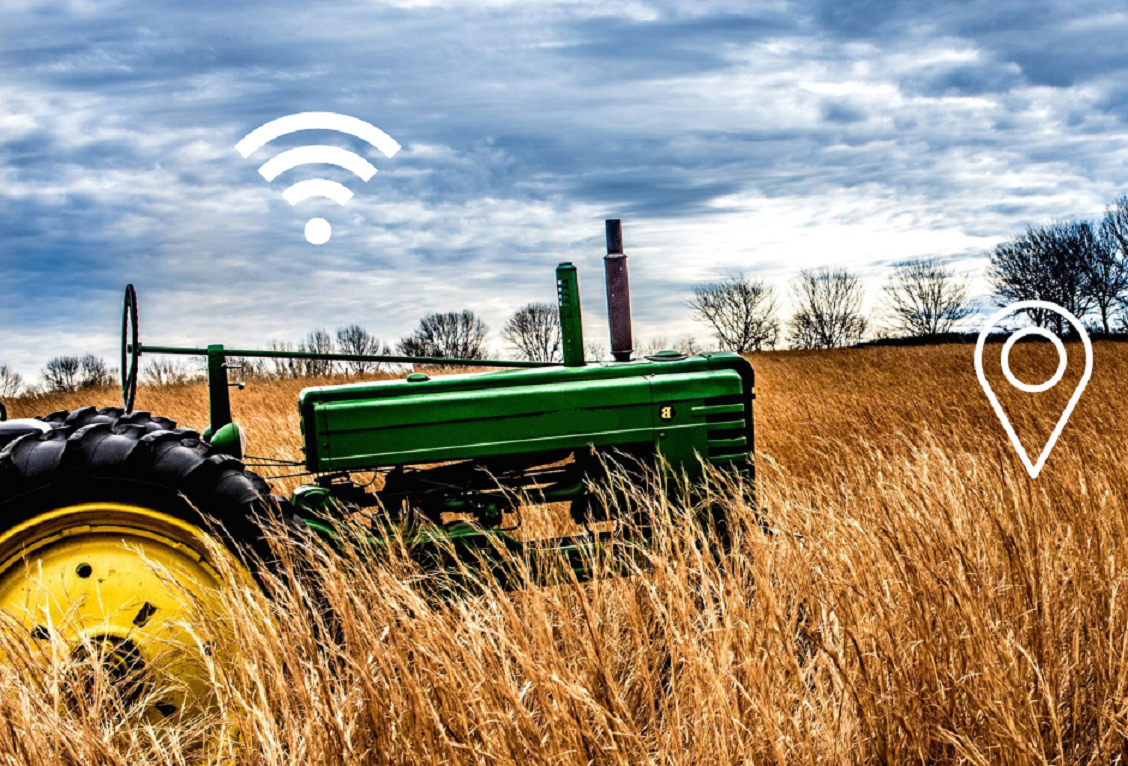Agriculture has remained at the forefront of technological innovation since the dawn of civilization. It is fitting that amid the Industry 4.0 Revolution, farms have been quick to embrace the boom in IoT technology. The resulting uplift in efficiency will benefit the industry’s bottom line, and humanity as a whole, but how is the smart farming revolution taking shape? And how does IoT and RTLS work in an agricultural context?
First, what is IoT and RTLS?
IoT (The Internet of Things)
The Internet of Things (or IoT) has become a a buzzword over the last few years. It refers to the inter-connectivity of devices through the internet; these could be fridges, phones, computers, vehicles, smart watches, security systems, and more. The inter-connectivity of intelligent devices is allowing for innovative new solutions to age-old problems, including the automation of many monotonous tasks. IoT devices began to proliferate in 2017, leading to a subsequent proliferation in the IIoT (Industrial Internet of Things).
RTLS (Real-Time Location Systems)
RTLS allows businesses or individuals to track the location of important assets in real-time. The implications of this technology a broad, as they can provide a detailed oversight of complex systems, allowing for streamlining, predictive analytics, automation, and improved safety measures. This is achieved by tagging all key assets (including vehicles, tools, devices, inventory and even people) and setting up sensor systems that receive data from each tag. A data hub then processes the data and submits it to an appropriate data visualization platform.
The Two Main Strands of 2023’s Smart Farming Technology
While there will be many use cases for RTLS and IoT in general across the farming industry in 2023, there are two broad use cases that stand out, and will potentially provide the greatest benefit to agricultural businesses.
-
Smart Farming: Commercial Vehicle Production
One of the first sectors of the agricultural industry to make use of RTLS systems was the Commercial Vehicle Production sector. Tractors, harvesters, seeders, hay balers, and forklifts keep the industry moving, but their production is not simple. Like any auto plant, these vehicle manufacturers need to understand what is happening on their production lines in order to predict resource and staff shortages. They also need to iron out production bottlenecks and perform all sorts of checks on their WIP and their production machinery.
Storing WIP effectively and be able to locate items when needed, without wasting time searching for everything on foot, is a crucial benefit to an effective RTLS. An RTLS can simplify these procedures and ensure that facilities also maintain high safety standards. Learn more here: Ubisense’s Commercial Vehicle Production RTLS.
-
Locating Commercial Vehicles: Tracking Tractors, Forklifts, and other Agricultural Vehicles
RTLS technology isn’t just restricted to indoor settings. Many RTLS providers will be able to track vehicles from their parking bays, out into wide areas of land. This can be achieved with a mixture of technologies (often GPS RTK for outdoors and UWB for closer-range, indoor parking). The result is a map of farming activity, where vehicle drivers can be directed effectively from an individual location, and managers can be made aware of any abnormalities in vehicle behavior.
When tractors are in need of maintenance, or forklifts are speeding in certain hazardous locations, notifications can be sent to senior management. Staff can be automatically assigned to certain vehicles and machinery, and the progress of maintenance, fueling, and safety checks can be visualized and color-coded.
If you are interested in learning more about what Ubisense can do for your agricultural vehicle tracking, please contact us via the button below.

